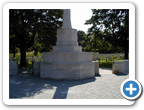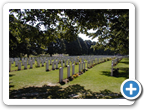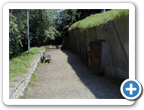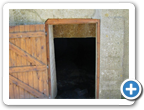The Western Front Today - Essex Farm
Just outside Ypres is the famed Essex Farm CWGC Cemetery and memorial to John McCrae, a candidate for the most visited site in the Ypres Salient.
Essex Farm received its name from a small cottage that stood nearby. The bunkers found here comprised a dressing station from 1915-17.
For many
years after the war they were flooded and therefore inaccessible, until
Ypres town council bought and renovated them in the 1990s.
Canadian Medical Officer John McCrae served here and
wrote possibly the war's most well known poem, 'In Flanders Fields' in 1915.
On May 2 a friend and patient of McCrae's, Lt. Alexis Helmer was killed by a direct hit from an 8in shell.
Touched by Helmer's last written words, "It has quieted a little and I shall try to get some sleep", McCrae read the committal service over Helmer's body, which was buried in the growing cemetery to the right of the dressing station (the cemetery remains today).
McCrae was moved to write his famous words:
"In Flanders fields the poppies blow
Between the crosses, row on row,
That mark our place."
Published in Punch magazine on December 8 1915 the poem became an instant popular success.
From the poem the poppy was taken as the emblem by the British Legion to represent remembrance of those who gave their lives in this and subsequent conflicts.
Helmer's grave was lost in subsequent fighting and is today marked among the names of the missing on the Menin Gate in Ypres.
John McCrae, subsequently promoted to Lieutenant Colonel, died in 1918 of pneumonia at a Base Hospital near Boulogne.
Film Footage of Essex Farm (1)
Film Footage of Essex Farm (2)
Film Footage of Essex Farm (2)
References:
Before Endeavours Fade, Rose E.B. Coombs, After the Battle 1994
Major & Mrs Holt's Battlefield Guide - Somme, Leo Cooper 2000
In preparation for the Battle of the Somme, the British launched a seven-day artillery bombardment in which 1,500 guns fired 1.6 million rounds.
- Did you know?





